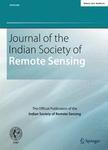版权所有:内蒙古大学图书馆 技术提供:维普资讯• 智图
内蒙古自治区呼和浩特市赛罕区大学西街235号 邮编: 010021

作者机构:Acad Univ Dept Math & Stat Wolfville NS Canada
出 版 物:《JOURNAL OF THE INDIAN SOCIETY OF REMOTE SENSING》 (印度遥感学会杂志)
年 卷 期:2017年第45卷第4期
页 面:569-578页
核心收录:
学科分类:0830[工学-环境科学与工程(可授工学、理学、农学学位)] 070801[理学-固体地球物理学] 07[理学] 08[工学] 0708[理学-地球物理学] 0816[工学-测绘科学与技术]
主 题:Classification and regression tree Support vector machine LANDSAT data mBACT
摘 要:This paper investigates the importance of spatial location of pixels in terms of row-column as an additional explanatory variable in classification along with available spectral bands of remotely sensed data. In view of this, a forward step-wise variable selection algorithm is used to select significant bands/variables and build an optimal model to extract the maximum accuracy. Author performed a case study on the area of town of Wolfville acquired by LANDSAT 5 TM data containing six 30 m resolution spectral bands and pixel location as an additional variable. Data are classified into seven classes using three advanced classifiers i.e. classification and regression trees (CART), support vector machines (SVM) and multi-class Bayesian additive classification tree (mBACT). Traditionally, it is assumed that addition of more explanatory variables always increase the accuracy of classified satellite images. However, results of this study show that adding more variables may sometimes confuse the classifier, that is, if selected carefully, fewer variables can provide the more accurate classification. Importance of row-column information turns out to be more beneficial for mBACT followed by SVM. Interestingly, spatial locations did not turn out to be useful for CART. Based on the findings of this study, mBACT appears to be a slightly better classifier than SVM and a substantially better than CART.